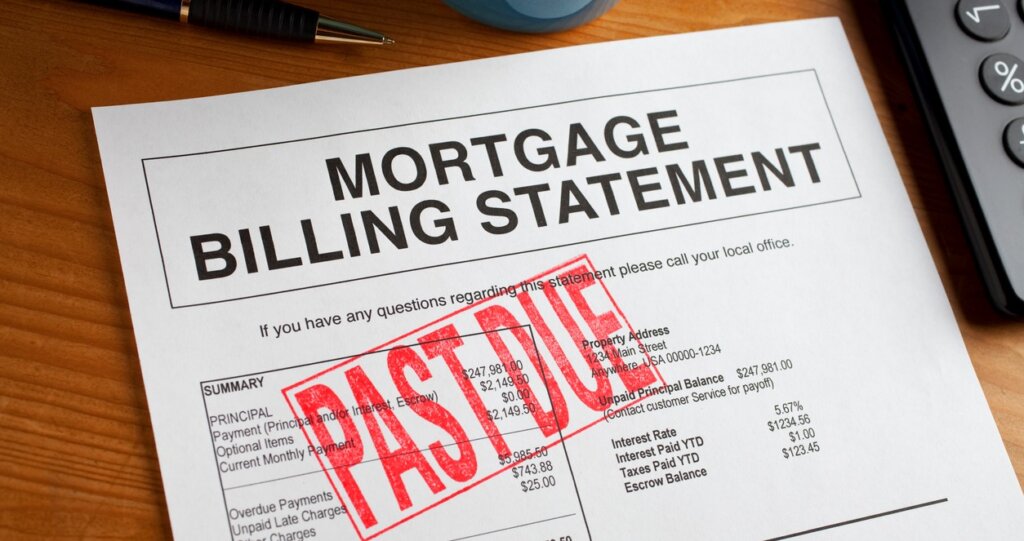Can You File Chapter 7 Bankruptcy & Keep Your House?
My legal team and I have seen many people face bankruptcy. These folks are frequently left with more questions than answers. Most people I’ve seen want to avoid losing their home in bankruptcy.
I’ve helped many people understand how extensive the damage would be to their credit along with knowing how long it could take to rebuild their financial reputation.
If you have ever wondered what would happen to your home in bankruptcy we’ll discuss that today.
Bankruptcy is, of course, frequently a last ditch effort to avoid losing your home in Bankruptcy. And it’s far from ideal. In fact, the stigma attached to bankruptcy is so great that many people assume it automatically means a forfeit of all assets, all property and all their reputation.
But… it doesn’t. In fact, declaring bankruptcy can frequently help you keep your home if you’re facing foreclosure. If it sounds ironic, it’s far from it. We think a chapter 13 bankruptcy is the best way to keep your house if your payments are several months behind. A CH 13 can inhibit you from selling your house if you change your mind or get behind in your bankruptcy payments anytime in the process and want to sell your house.
Keeping your house while in foreclosure needs to be the most important goal if you file bankruptcy. Once you file bankruptcy, you need court approval to sell your house, and the court may be able to keep part of your equity to satisfy creditors. Avoid losing your home in bankruptcy by following the information below.
Bankruptcy Types And The Differences
The automatic assumption many people have about bankruptcy in Utah is that it’s designed for you to forfeit your right as a property or asset holder to creditors. In actuality, it’s much more fair-minded than you’d think. Bankruptcy is designed to forgive your debts and allow you to make a fresh start after many avenues have simply failed you. And while in some instances this may entail the loss of your home and other assets, frequently it allows you to minimize the process of foreclosure—keep your house—provided you meet certain requirements.
Consumers are faced with two types of bankruptcy in Utah which can be claimed: Chapter 7 and Chapter 13. In both instances, a court may appoint a trustee who is legally responsible for managing your financial affairs as well as any distribution of assets to a creditor. Both Chapter 7 and 13 have particular advantages as well as disadvantages, but the primary differences are structured in part on the exemptions you can legally claim—and this includes property. Both options can help you avoid losing your home in bankruptcy.
Chapter 13 Bankruptcy
Chapter 13 bankruptcy is a reorganization plan designed to help debt owners with regular income to restructure payment options over a three-to-five year period. The monthly amount is contingent on both the type of debt, monthly income and state exemptions. For homeowners, it can seem like the more obvious choice since it allows you additional time to catch up with late payments. However, should the courts appoint you a trustee you’re frequently entitled to award an additional monthly fee to them based on a percentage of your restructured payment plan. And for some homeowners, that may turn out to be as much as their initial mortgage prior to filing for bankruptcy.
Chapter 7 Bankruptcy
Chapter 7 bankruptcy is a liquidation plan that essentially cancels any debt owed and can temporarily including mortgages and home equity loan payments. While there are various other factors to take into consideration, for the most part eligibility is contingent on whether or not your monthly income is below the median for a household size in your state. And while a discharge of Chapter 7 bankruptcy is much quicker than Chapter 13—typically three to four months—many homeowners meeting requirements will typically opt for the latter; chiefly because Chapter 7 bankruptcy does allow a trustee the legal right to sell nonexempt property. And unfortunately, the distinction between exempt and nonexempt property is more complicated.
Exempt and Nonexempt Property
Bankruptcy in Utah allows some of your property to be exempt. Under Chapter 7 bankruptcy law, exempt property is considered property that is essential for the support of your dependents; meaning your primary home. Nonexempt would by default be any secondary residence or vacation home. For many Utah residents, the latter may not be a concern. And if you’re an investor, you may find the notion of asset liquidation to be particularly nerve-wracking. However, Utah bankruptcy laws operate slightly differently from some other states in determining the exemption of an asset.
In Utah as of January 15, 2023, the exemption is defined by the equity of a property. Individuals with no home equity are considered exempt. Homeowners owing less than the state minimum for home equity (in Utah’s case, $30,000 per individual or $60,000 per couple for a primary residence) can claim what’s known as a homestead exemption—which can include up to $5,000 in a household which is not your primary residence. Individuals filing for joint bankruptcy, however, can each claim an individual exemption up to the state minimum for both primary and secondary residences; $60,000 and $10,000 respectively.
Please note that the homestead exemption in Utah cannot be used to protect your property from debts due to taxes or assessments, purchase, child support or liens. These exemptions can certainly help you avoid losing your home in bankruptcy.
Can I Keep My Home If I File For Chapter 13 Bankruptcy In Utah?
For most people, the answer is yes. So long as you continue to pay monthly mortgage payments under the restructured plan, filing for Chapter 13 bankruptcy will allow you to keep your home even under threat of foreclosure by automatic stay. Any arrears owed prior to filing can, in some instances, be paid at the conclusion of your plan. However, eligibility is contingent on both the amount of debt owed and your monthly income. Bankruptcy law dictates you cannot have more than approximately $420,000 of unsecured debt and no more than approximately $1.25 Million of secured debt to qualify.
Can I Keep My Home If I File For Chapter 7 Bankruptcy In Utah?
This can be a little more complicated. In Utah, the state median income level for a four person household is $91,750. Provided your annual income is less, you can file for Chapter 7 bankruptcy; an automatic stay will go into effect, preventing foreclosure temporarily—provided there are no current liens. A trustee can still sell any nonexempt property, however. Given homestead exemption laws, if you have either no equity in your primary residence or less than the Utah state minimum of $30,000 ($60,000 if filing jointly) for a primary residence and less than $5,000 ($10,000 if filed jointly) on a secondary home, you can claim your home as exempt from sale. A CH 7 bankruptcy can certainly help you avoid losing your home in bankruptcy.
Keep in mind, however, that a trustee is appointed by the courts for the benefit of your creditors. Provided you have nonexempt property, they often can sell both primary and secondary residences. However, even nonexempt property can often be construed more liberally if it can be argued that it is essential for you and your family as a fundamental means of support. In most cases, consulting with a qualified bankruptcy attorney will generally ensure you can keep at least one property for use as a primary residence.
Filing For Bankruptcy
It’s a common myth that filing for bankruptcy needs to be done through an attorney. While in more complicated cases a qualified attorney can often convert nonexempt assets into exempt ones, Utah is similar to all other states. Bankruptcy filing can be entirely done on your own.
Self Filing For Bankruptcy In Utah
- Pros: The lack of accruing unnecessary legal fees for relatively simple cases. Forms for both Chapter 13 and Chapter 7 bankruptcy are easily obtainable from the US Bankruptcy Court for the state of Utah. And while there is a nominal application fee in both instances, it’s minor compared to the relief even a temporary bankruptcy plan can bring.
- Cons: Bankruptcy is a complex subject; and the more complex your particular situation is, the more you’re likely to overlook assets and exemptions which can allow you to strip away even greater debt. Bankruptcy attorneys are versed in the specifics of the law for a reason; to work on your behalf against creditors.
Filing Through An Attorney In Utah
- Pros: Particularly with Chapter 7 bankruptcy, those instances where you may not meet eligibility requirements for a homestead exemption can be contested and ensure you at least one property to keep as a primary residence. In addition, there are particular clauses which may convert nonexempt property into exempt property through legal acumen.
- Cons: Bankruptcy attorneys can be cost prohibitive, particularly if you are attempting to claim Chapter 7.
Conclusion
It’s important to keep in mind what we said at the beginning of this article. Bankruptcy is designed to forgive your debts and allow you to make a fresh start after all other avenues have simply failed you. There’s no shame in bankruptcy. Millions of Americans file annually and are able to move on with their lives with a clean slate. Filing efficiently, however, is critical; and there are no two cases that are alike.
If you are in a bankruptcy situation me and my team can help you here at GaryBuysHouses. We buy homes “as is”. Whatever situation you are in reach out to us here and in 10 minutes or less we will give you a fair cash offer for your home or property. We have a professional legal team standing by to make the whole process run smoothly for you.
Please call or text Gary at (801) 382-9199 with any questions

